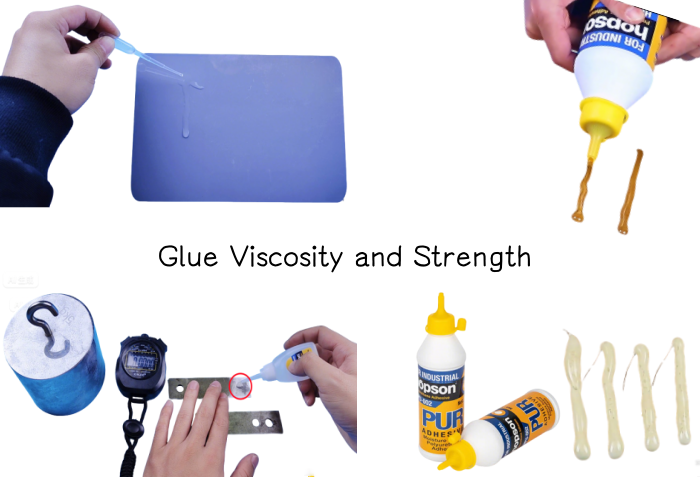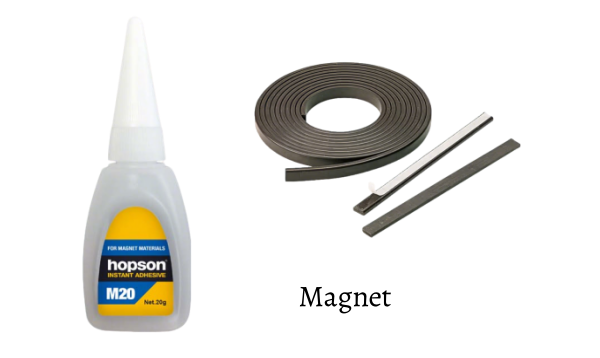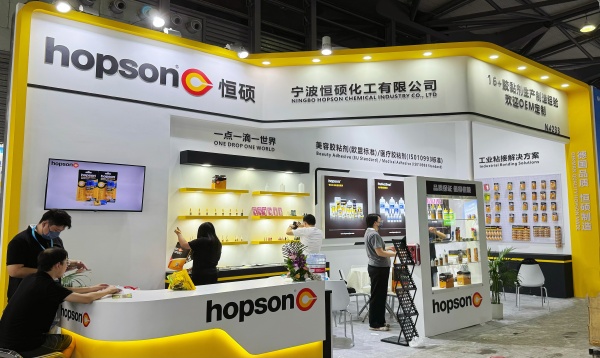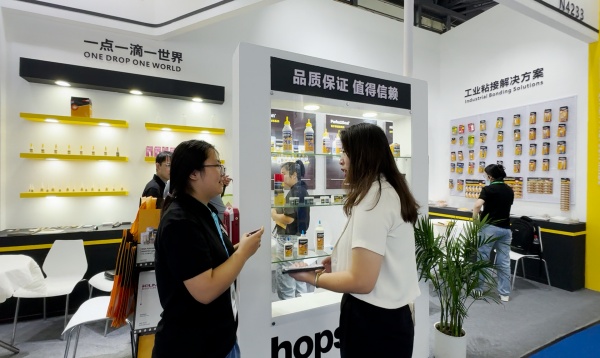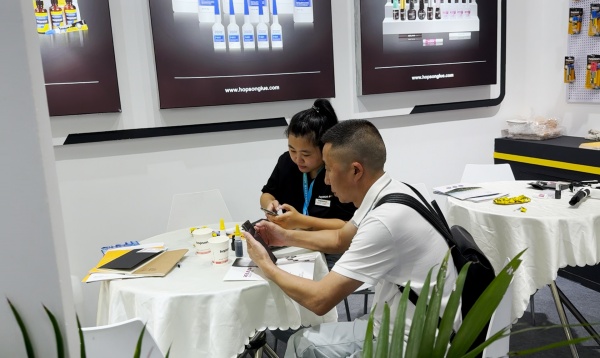PVC glue, also known as solvent cement, is a chemical solvent that melts the surface of the PVC pipe. When applied to pipe and fittings, the cement melts a thin layer that solidifiesin the second safter being put together, forming a seamless, waterproo seal.
Types of PVC Pipe Glue
There are three main types of PVC: polyvinyl chloride (PVC), chlorinated polyvinyl chloride (CPVC), and acrylonitrile butadiene styrene (ABS). The first two are similar in make-up. The difference is in their temperature tolerance, the CPVC (chlorinated polyvinyl chloride) can withstand much higher temperatures than PVC (polyvinyl chloride), is used more for commercial applications, and is more expensive.
In contrast, ABS has a completely different composition. It is an opaque thermoplastic polymer commonly used in injection molding.
Many people refer to “PVC glue,” which can include various adhesives like super glue. But, to permanently bond two pieces of PVC materials, a specific type of adhesive called solvent cement is required.
A PVC cement creates a chemical bond and merges the two components in a process called cold welding, whereas glue simply forms a bond. (The difference boils down to regular glue being an adhesive and PVC cement being a solvent.)
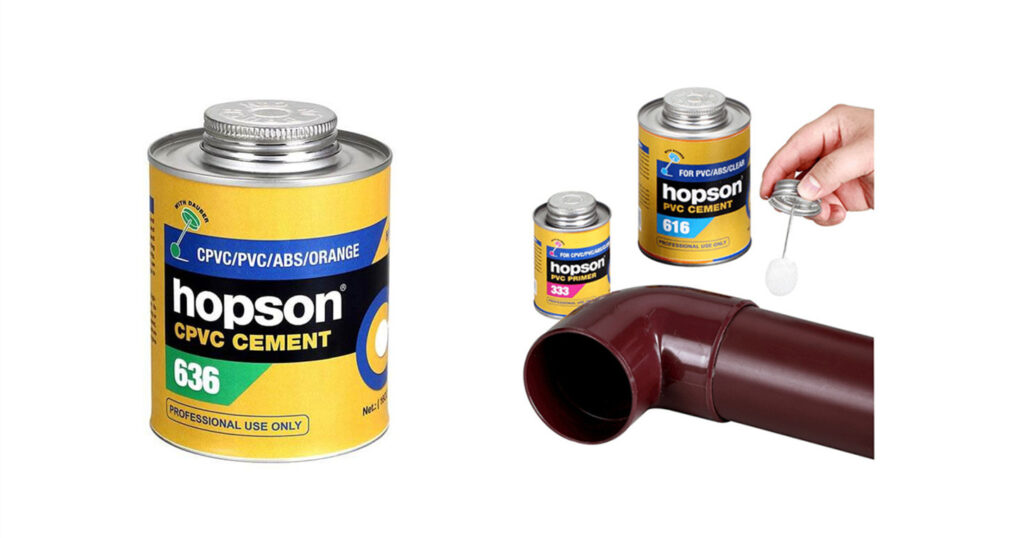
PVC (Polyvinyl Chloride) Cement
This cement is made for PVC piping under 40 and 80 schedules.
Schedule 40: The lower schedule has thinner walls and can only withstand lower water pressures
Schedule 80: The schedule is thicker and can be used in industrial applications.
When applied to the piping, the surface softens, creating a permanent joint or bond that can’t be separated unless cut. Applications include drains plumbing pipes, cable insulation, etc.
Color-Coded PVC Cement
When purchasing PVC cement, you may notice that products come in various colors. These colors are intended for different applications.
- The transition cement is labeled green.
- Blue PVC cement sare for quick setting cement.
- Aqua blue PVC cement is suitable for use in water or damp conditions.
- Orange is for cold weather uses.
- Yellow is a one-step cement that does not require a primer for the CPVC cement.
ABS (Acrylonitrile Butadiene Styrene) Cemen
ABS cement should not be used on other types of PVC, as it is strictly prohibited by plumbing regulations to use the wrong adhesive. ABS piping is commonly used for drain, waste, and vent (DWV) applications. Using the correct type of cement is crucial to prevent pipe joints from weakening or bursting.
Transition Cement
Transition or general-purpose cement can bond different PVC piping, such as PVC to ABS, without causing a strong chemical reaction or producing toxic fumes.
CPVC (Chlorinated Polyvinyl Chloride) Cement
CPVC cement performs better than cheaper PVC cement, making it effective for varying temperature conditions. It can firmly bond PVC pipes together. When purchasing, pay attention to the consistency of the cement; if it has thickened, it may not bond properly.
How to glue pvc pipe?
PVC pipe is commonly used for irrigation and sewage applications. In some situations, simple repairs to PVC piping will not be sufficient and you must replace a section.
When dealing with water pipes, always turn off the water supply at the mains before starting repairs. Follow the steps below for gluing PVC pipe to easily resolve your issues.
Tools Required
- Pipe Cutter or Handsaw
- Vice
- Nut driver
- Clean rags
- Sandpaper
Materials Required
- PVC Cement and PVC primer
- Pipe and fittings
- Transition coupling
Measure and cut
- First, remove the damaged section of the pipe, measure and cut the pipe to the correct specifications, and mark your new piping with a felt tip pen or pencil.
- Place your piping into the vice line up your marked area and cut the correct size.
- Use sandpaper to file off the inner burrs and the outer burrs
Note: The pipe will slip into the fitting easier and you’ll get a tighter fit.
Dry Fit
To ensure accuracy and prevent mistakes, dry-fit the PVC pipe before applying the solvent cement. This step will help confirm that your measurements are correct. if the dimensions are wrong, You can make adjustments, and get new PVC join.
Note:
During the dry fitting process, draw reference lines on your pieces. Mark vertical lines on the pipe to indicate the correct insertion angle and horizontal lines to show the appropriate depth for pushing the pipe into the socket.
Apply the PVC Prime
Use the attached brush to spread PVC primer over the outside of the pipe and the inside of the fitting. Let it dry for about 10 seconds. The primer softens and cleans the plastic.
Apply the PVC Cement
Apply the cement to the primed areas on the inside of the fitting and to the outside of the pipe.
Push and Twist
Slide the pipe into the fitting until it bottoms out against the fitting’s shoulder, then give it a ¼-inch turn to spread the glue and speed its cure.
If you’re attaching a fitting, push it in with the reference marks slightly out of register, and turn the fitting to align the marks. Hold for 30 seconds, then wipe away excess cement with a dry rag.
More Safety Requirements When Gluing PVC Pipe
- When gluing PVC and working with toxic materials in a well-ventilated space or outside, it is best to wear protective equipment (for example a respirator mask and nitrile gloves that are resistant to chemicals).
- Have all your materials and tools ready before gluing, as you have to work quickly.
- Purchase a few spare fittings for your project so that if you make a mistake, you can replace them immediately without delay.
- Work quickly but with precision, and try to avoid any drips and splashes.
- Avoid working in areas with an open flame since the materials are highly flammable.

